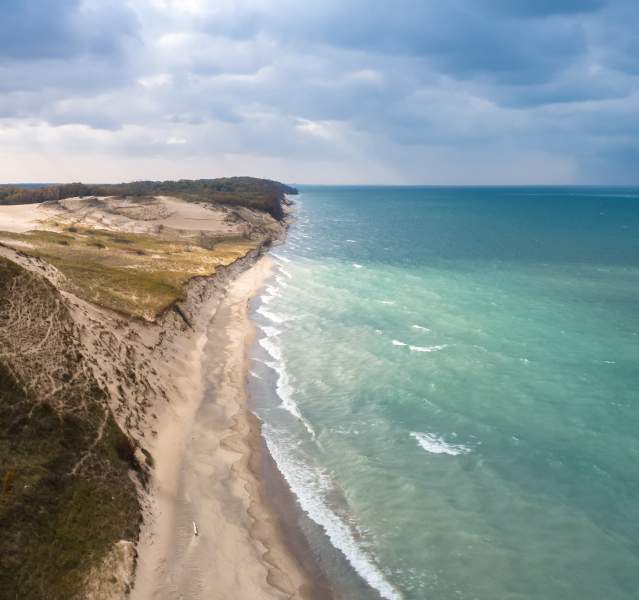It’s early April, and any day now, the bison calves will be born. We can hardly wait to see the calves on the Kankakee Sands prairie!
Bison were brought to Kankakee Sands in October of 2016 to help us manage the prairie. Since that time, they have been grazing and wallowing and doing all the great things that bison do in a prairie ecosystem. Before being brought to Kankakee Sands, our bison bred naturally in South Dakota in the late summer of 2016. Bison have a gestation period of approximately nine months, so the calves should be arriving soon.
We are hopeful that ten to fifteen calves will be born this year. Over the next few years, we look forward to the size of the herd increasing to a population that allows for a healthy prairie. We expect that number to be approximately fifty-five to seventy bison.
Bison calves are normally born between April and May. They are born with their eyes open and can stand within minutes of being born. Calves are able to run when they are just hours old. It’s a handy skill for a creature born onto a prairie with wolves, which historically would have been the case. Calves are born with fur that is red or tan in color. Due to the reddish hues of their fur, bison calves are often referred to as “red dogs” or “cinnamons.” As they get older, their fur will darken to shades of brown.
The little red dogs weigh 40 to 50 pounds at birth, ultimately reaching 800 to 1200 pounds if they are a female and 1700 to 2000 pounds if they are male. Just like all mammals, bison calves nurse. They begin eating vegetation when they are as a young as a week old. Calves are fully weaned from their mother’s milk within a few months.

Photo credit: © Gary Fua
Female bison, called cows, typically give birth to one calf per year; twins are rare. When it is time to give birth, the cows will often move away from the herd and settle down in the prairie. After birthing, the female will return with the calf to the herd. However, the calves routinely lie down and hide in the prairie grasses, making them difficult to see.
Any day now, the calves will be born. We will continue to watch and wait patiently until that exciting day when the herd allows us to see the next generation of bison that will assist us in managing the prairies of Kankakee Sands. And when we see them, we will celebrate! Come celebrate with us by visiting Kankakee Sands. The Bison Viewing Area is open from 7 am to dusk every day of the year.
Read more about how you can experience the bison at Kankakee Sands. Read our post about where to see the bison and how bison face winter every year on the prairie.
Don't forget you can also see bison up close at Broken Wagon Bison Farm.
This article was written by Alyssa Nyberg of Kankakee Sands. The Nature Conservancy’s Kankakee Sands is an 8,300-acre prairie and savanna habitat in Northwest Indiana, open every day of the year for public enjoyment. For more information about Kankakee Sands, visit www.nature.org/KankakeeSands or call the office at 219-285-2184.


